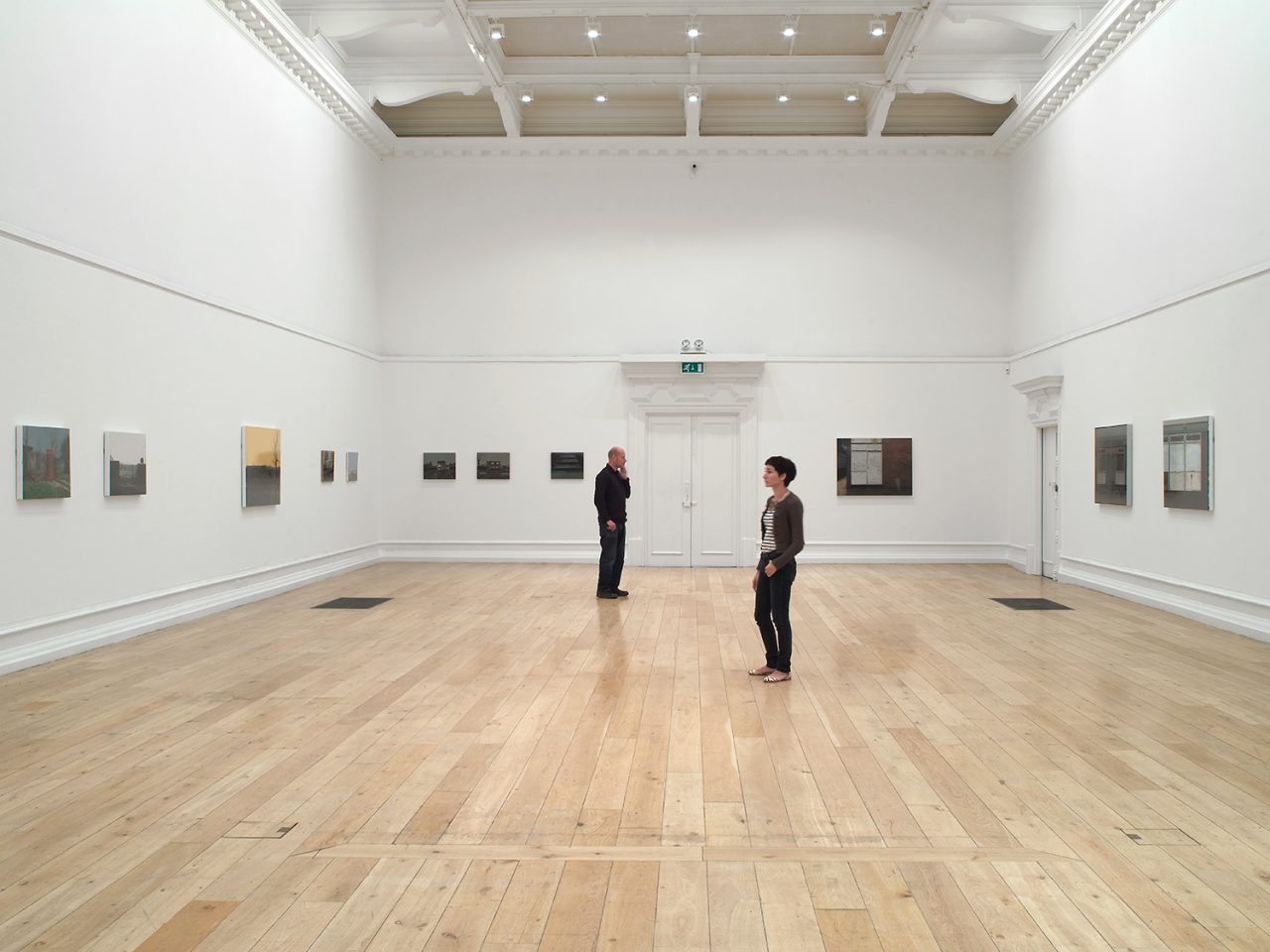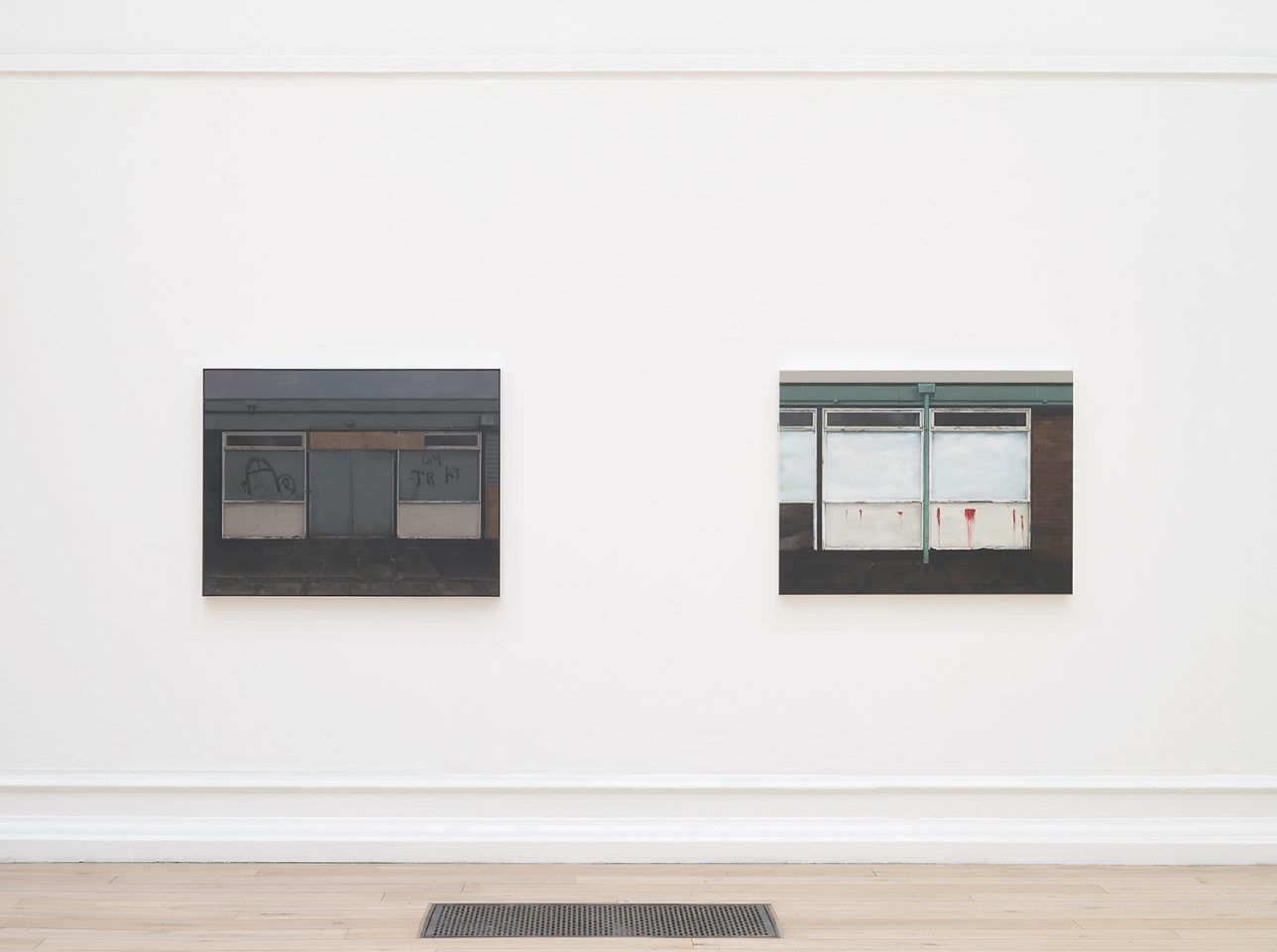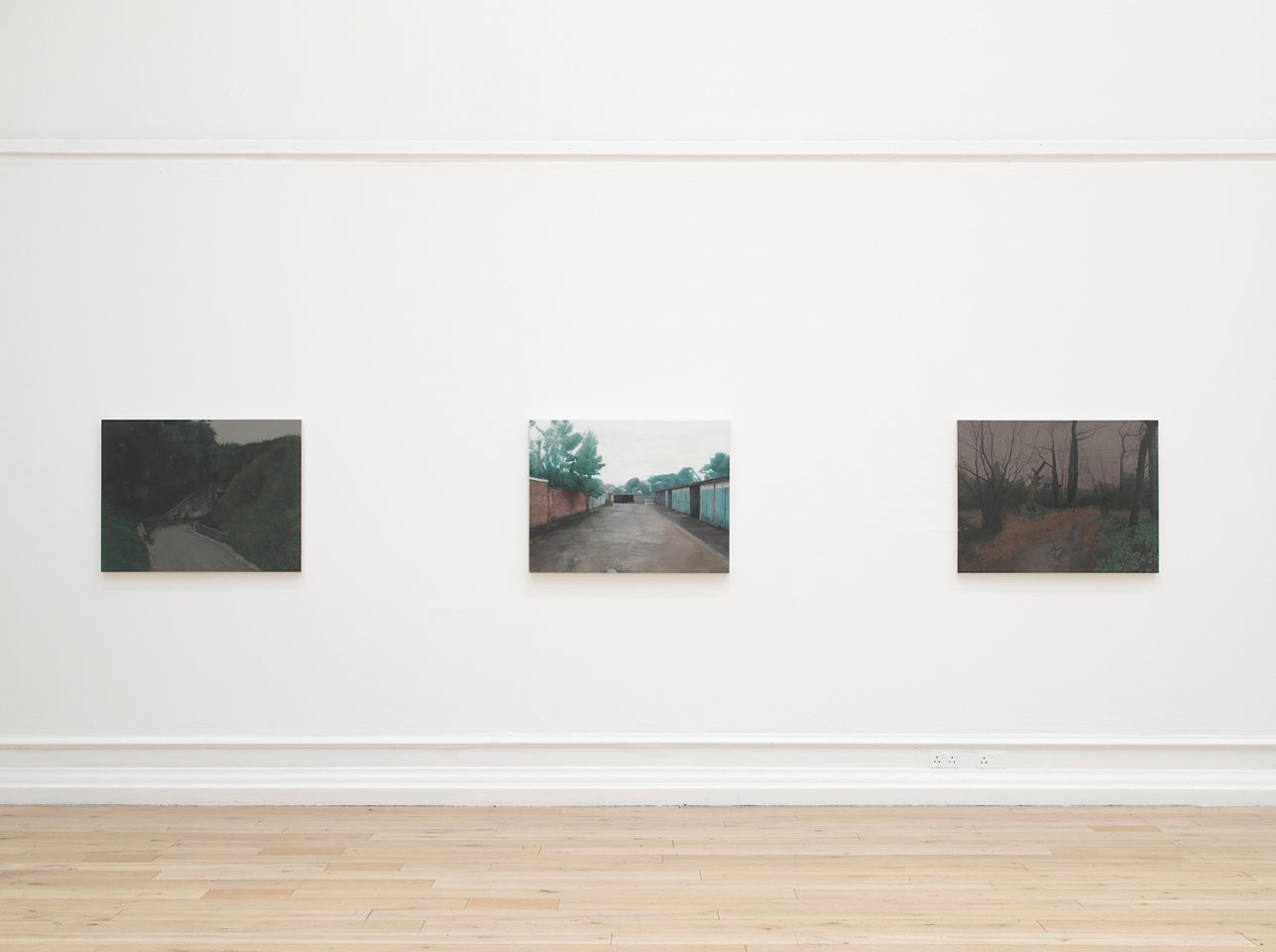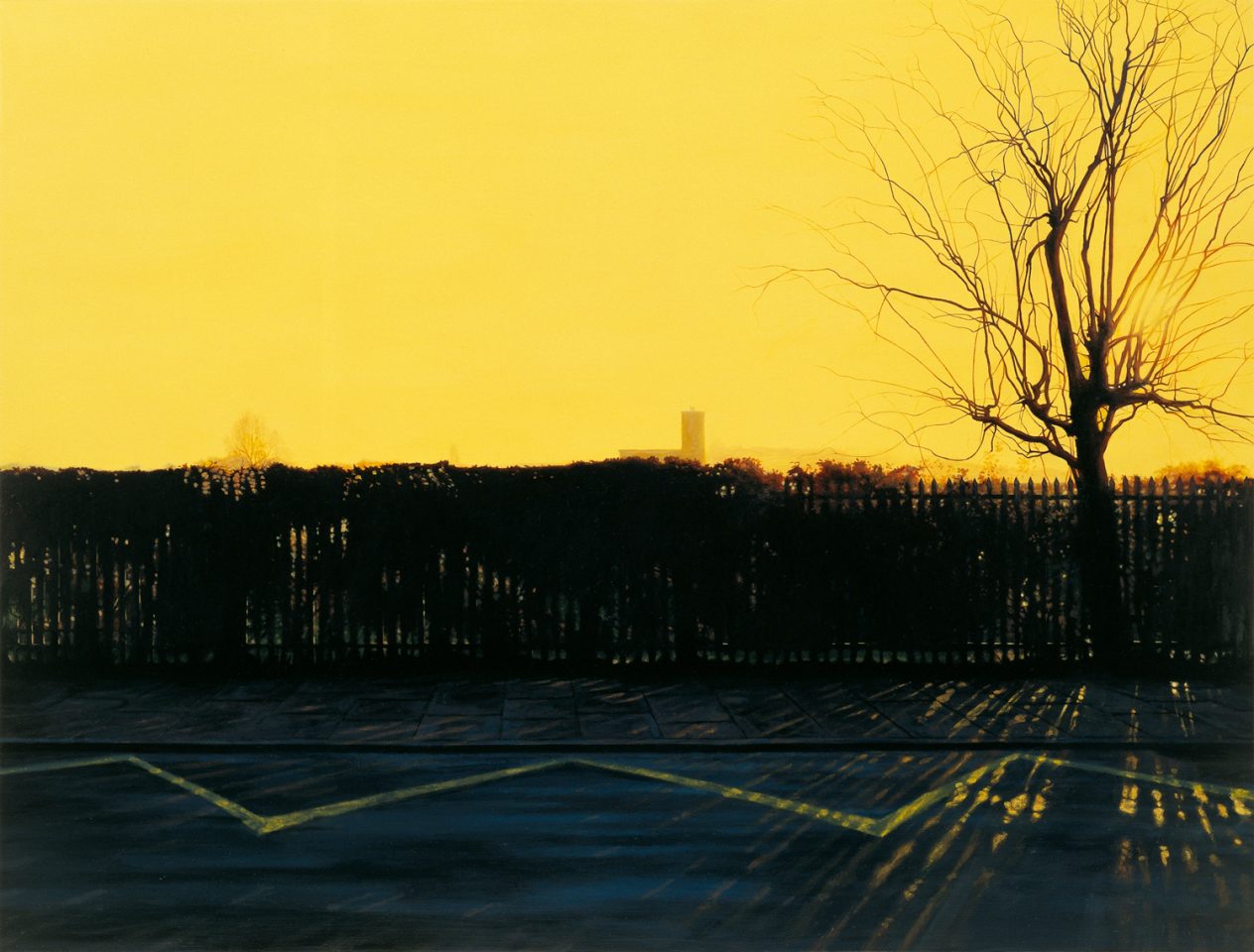
George Shaw, Ash Wednesday: 8.30am, 2004/5. Copyright: the artist and Wilkinson Gallery, London.
This solo exhibition by British artist George Shaw brings together paintings made over the past 15 years which chart the urban landscape of his childhood home on the Tile Hill Estate in Coventry. Painted in Humbrol enamels, more usually associated with boyhood model-making, and based on photographs, Shaw’s works revisit landmarks remembered from his youth. Meticulously painted houses, pubs, underpasses and parks become autobiographical notes, frozen in time. Conflating memory and present day reality, Shaw’s works take on an uncanny quality, alluding to a murkier side of contemporary society and collective subconscious.

Photo: Jane Sebire. Courtesy Wilkinson Gallery, London.
Artist
George Shaw was born in Coventry, England in 1966. He studied at Sheffield Polytechnic and later the Royal College of Art, London. In 2001, Shaw was shortlisted for the Turner Prize for his solo exhibition ‘The Sly and Unseen Day’, a selection of works focusing on the Tile Hill housing estate, Coventry where he grew up.
As a painter, Shaw is known for his use of Humbrol enamel paint, normally the preserve of young model-makers, and while landscape as his subject, he focuses on the suburban surroundings of his childhood rather than the countryside. His paintings and drawings depict bus stops, phone boxes, pubs and graffiti against a backdrop of semidetached homes, blocks of flats and expanses of grey sky. This view of England is not always flattering, but it offers a detailed study of the changing nature of social housing; these unconsidered or neglected landscapes suddenly elevated by the poignancy of personal memory.
His work, Ash Wednesday: 3pm (2004–05) is part of a series of works produced at half-hour intervals throughout the day, around the Tile Hill housing estate. The work depicts a typical council house with a vast, leafless tree dominating the modest front garden. The grey/blue tones give it a brooding quality, the closed curtains and sparseness of the season creating a domestic scene from which signs of life are strangely absent. Yet the still, almost photographic framing draws attention to the presence of an observer looking, or remembering, the details of the scene.
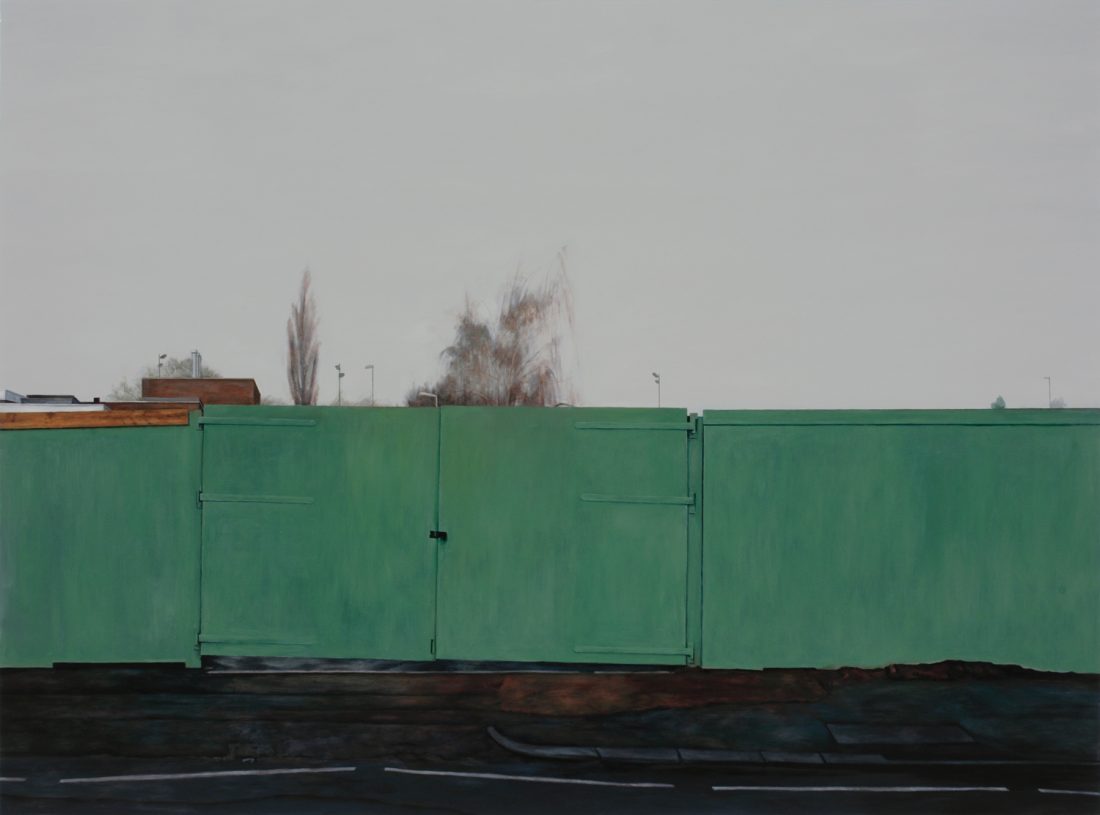
George Shaw, No Returns, 2009. Copyright: the artist and Wilkinson Gallery, London.
